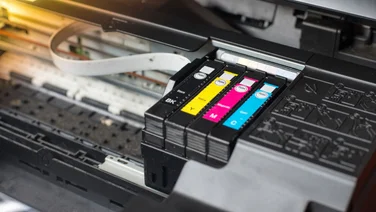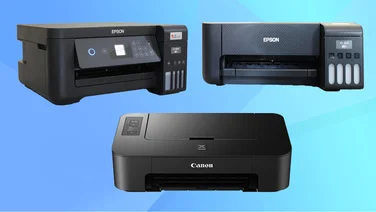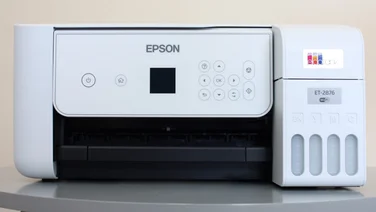To help us provide you with free impartial advice, we may earn a commission if you buy through links on our site. Learn more



Kodak’s ESP 9250 is an office-orientated device. It’s rare in that it has a fax modem which, together with a 30-sheet automatic document feeder, means you can send multi-page communications to places where the internet is yet to arrive. It’s made of silver-grey plastics rather than trendy black ones, but the formal-looking result is rather handsome. Build quality is high, too, with the exception of the lead from the external power adaptor, which wobbles a bit in its socket. We’d avoid pushing the printer fully back against a wall for this reason, although the protruding duplexer should stop it coming to any harm.

Aside from the fax modem and ADF, this MFP is quite well specified with photo printing features such as card slots and a colour display, although at just 6.1cm this is one of the smallest here. Kodak’s installer offers to download the latest software and firmware from the web. It’s a chatty program; giving you updates on everything it’s downloading and installing while all the time running a video to remind you how great the MFP you just bought is.

Kodak uses a different arrangement of inks to other manufacturers. A large black tank of pigment ink is partnered with a single colour tank containing black, cyan, magenta and yellow inks – also pigmented. Unlike the dye-based inks in most inkjets, the pigment particles in Kodak’s colour inks can’t pass through the protective top layer of photo paper, which would normally result in prints without a uniform glossy finish. To address this, there’s a fifth chamber in the colour cartridge that contains a clear gloss coating. The upside of pigment inks is that they should produce stronger colours on plain paper, and be far more resistant to fade. Indeed, Willhelm Research suggests Kodak’s photo prints will last 259 years.
The is impressive, but the quality of the photos isn’t. While our two colour 10x8in photos looked good, our black and white image had a distinct magenta cast and lacked detail in dark areas. Things weren’t much better on our postcard-sized prints which, despite sharp detailing in the mid-tones, had lacklustre colours and an unconvincing gloss finish that imparted a magenta note to reflections. Also, the ESP 9250 couldn’t recognise the photos on the SD card we used for testing, despite virtually every other recent MFP having no such problem.

While black text looked dark and very crisp, we were surprised that Kodak’s pigmented colour inks didn’t make more of an impression on plain paper. The outline of colour text remained crisp and the detail of graphics was high, but the colours themselves remained drab and looked slightly washed out.
We were happier with results from the scanner, which was fairly quick even at high resolutions and produced sharply-focused results. Detail was well preserved in very light areas, with only the very darkest two shades on our Q-60 target being hard to distinguish. Colour fidelity wasn’t its strong point, but while images ended up with slightly richer colours than the originals, the effect was subtle rather than ruinous.
With underwhelming photos, the Kodak’s balance of features and extremely low running costs suggest it’s best left in the office. Aside from imperfect colour photocopies, it does everything a small business needs.






